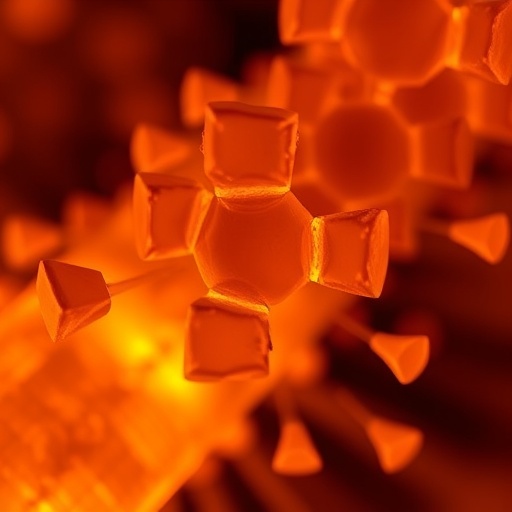A remarkable advancement in electron microscopy has emerged from the innovative minds at the University of Victoria (UVic), offering a significant shift in how scientists will visualize structures at the atomic level. The team, led by Arthur Blackburn, has successfully developed a pioneering imaging technique that achieves sub-Ångström resolution. This breakthrough presents an opportunity for researchers worldwide to utilize lower-cost, energy-efficient scanning electron microscopes (SEM) without compromising on the detail of the imaging.
With a resolution capability of less than one ten-billionth of a meter, this technique sets the stage for a more accessible form of high-resolution microscopy. Traditional methods often rely on complex and expensive transmission electron microscopes (TEM) to reach such levels of precision. Blackburn, who holds a key position as co-director of UVic’s Advanced Microscopy Facility, emphasizes that this achievement demonstrates the potential of simpler equipment when paired with advanced computational techniques. This revelation carries profound implications, underscoring that elite imaging does not need to be synonymous with upscale, intricate instrumentation.
The innovative imaging technique revolves around the complex approach known as ptychography, a method that utilizes overlapping electron patterns to construct highly detailed images from scattered electrons. The researchers demonstrated the power of this technique by achieving a striking resolution of 0.67 Ångström, which is even more minute than that of an individual atom. Given that this measurement is equivalent to 1/10,000 the width of a human hair, it illustrates the phenomenal detail attainable with their new methodology. Historically, sub-Ångström resolution was the domain of high-energy beam TEM, making this achievement particularly noteworthy.
The implications of this research are expansive, potentially transforming diverse fields including materials science, nanotechnology, and the study of structural biology. Blackburn notes that the immediate applications could see significant benefits within the realm of 2D materials, which hold great promise for advancements in next-generation electronics. However, the long-term effects promise even deeper impacts, especially in biomedical research, where understanding the structure of small proteins can lead to breakthroughs in health and the fight against diseases.
Supporting this revolution in microscopy is the collaboration with Hitachi High-Tech Canada, alongside backing from the Natural Sciences and Engineering Research Council of Canada (NSERC). Such partnerships amplify the capacity for technological advancement and signal a collective drive towards more sustainable and economically viable scientific practices. With microscopy becoming increasingly available, broader scientific communities will have the tools necessary to explore new frontiers in research.
Published in the prestigious journal Nature Communications, this work has garnered the attention of many within the scientific community. The journal is known for highlighting groundbreaking discoveries, and UVic’s research on sub-Ångström resolution in a SEM is a strong illustration of innovation in action. Readers and researchers alike are now able to engage with this knowledge, empowering them to take advantage of the new possibilities laid out by these advancements.
While the focus has largely been on the technological achievements, it’s essential to consider the philosophical implications. The essence of science thrives on curiosity, exploration, and accessibility. As researchers break down the barriers associated with high-resolution imaging, it nudges the entire scientific community toward a more inclusive future. This democratization of technology allows labs with limited resources to partake in the thrilling adventure of chasing fundamental questions in science.
Moreover, this work represents a shift in how scientific collaboration might evolve. The integration of advanced computational techniques with traditional electron microscopy presents myriad opportunities for interdisciplinary collaborations. Scientists across various fields can join forces, applying this technique to a wealth of materials and biological structures, ultimately accelerating the rate of discovery across several domains.
By harnessing the newfound capabilities of SEM and ptychography, researchers have the chance to revolutionize not only the tools at their disposal, but also the questions they seek to answer. How can scientists apply this technique to investigate the quantum properties of materials, for example? Or, how might it aid in understanding the complex interactions between proteins and small molecules in the human body? The unfolding narrative in microscopy goes beyond simply imaging; it is about interpreting the very fabric of existence at the atomic scale.
As the results continue to reverberate through the scientific community, discussions about the next steps and potential applications will surely gain momentum. Laboratories worldwide will be tasked with exploring the frontiers made accessible by Blackburn’s team’s achievements. The interplay of technology, mathematics, and creativity in science offers a fertile ground for groundbreaking research.
Reflections on this transformative moment also raise questions about the future of technological advancements. The age of ultra-precision microscopy seems to signal not just an accelerated pace of scientific discovery, but also an augmentation of the scientific method itself. With less reliance on sophisticated apparatus, scientists may find themselves free to explore new avenues of research, enabling a renaissance in scientific exploration and understanding.
In conclusion, the breakthrough achieved by the University of Victoria is more than a mere advancement in microscopy. It is an invitation to redefine limitations, a catalyst for collaboration and interdisciplinary approaches, and a beacon of change illuminating the pathway toward making high-resolution imaging more accessible to all. With capabilities once restricted to a select few now within reach, the future of scientific inquiry is poised to evolve dramatically.
Subject of Research: Not applicable
Article Title: Sub-ångström resolution ptychography in a scanning electron microscope at 20 keV
News Publication Date: 14-Oct-2025
Web References: Nature Communications
References: None
Image Credits: None
Keywords
electron microscopy, University of Victoria, atomic-scale structures, sub-Ångström resolution, scanning electron microscope, transmission electron microscope, ptychography, nanotechnology, materials science, structural biology, advanced computational techniques, research collaboration.




